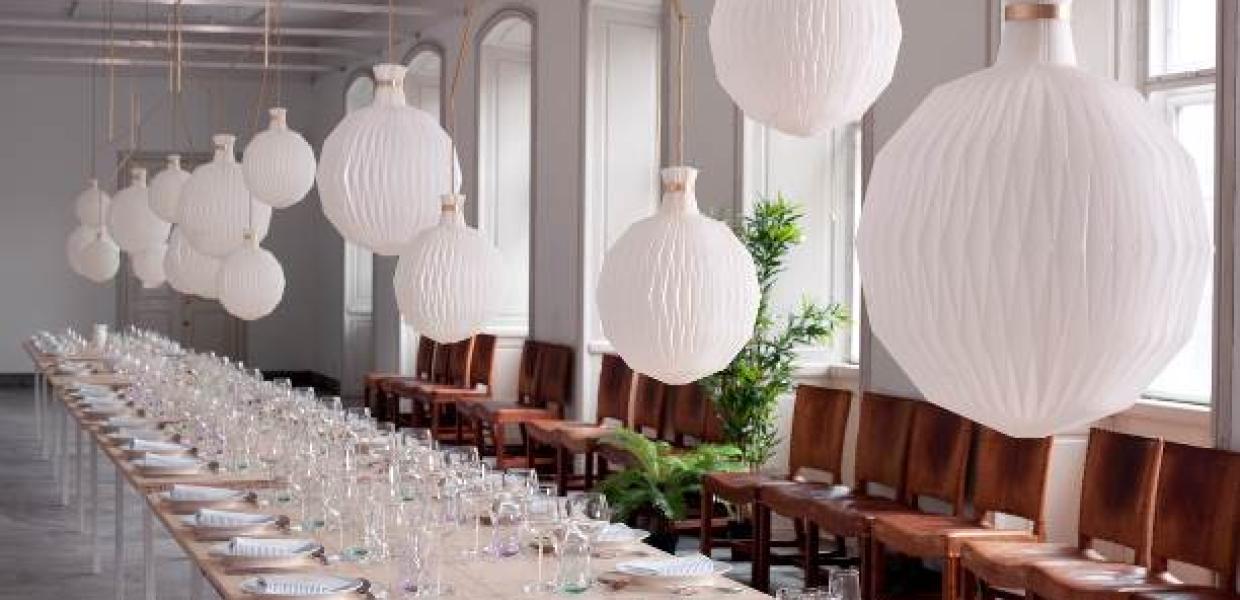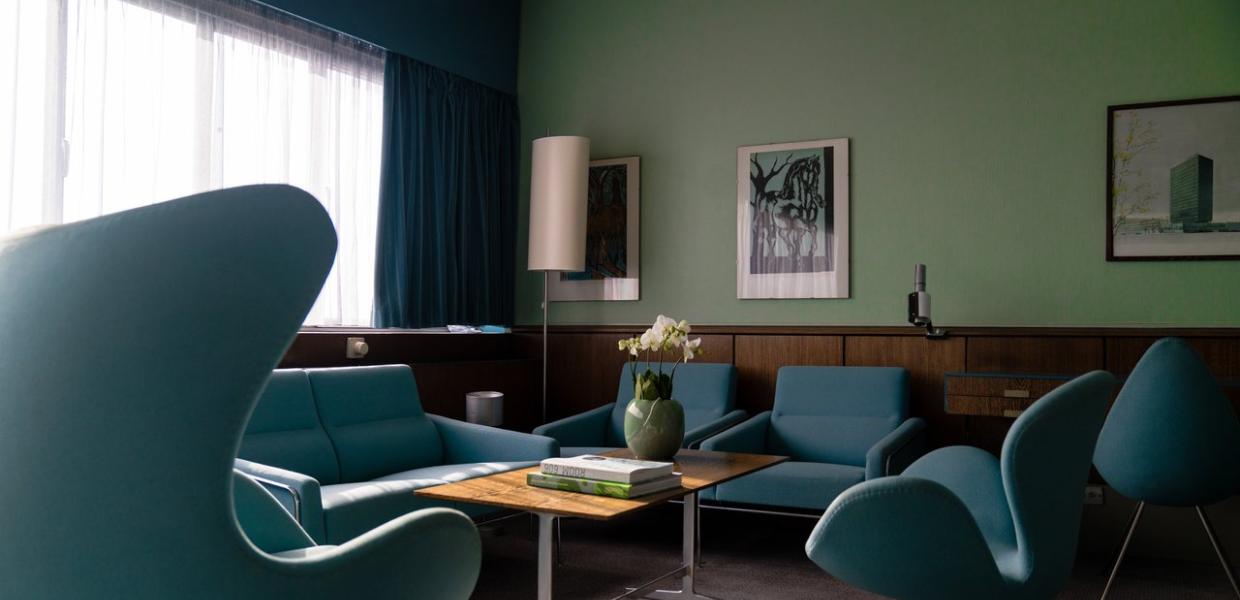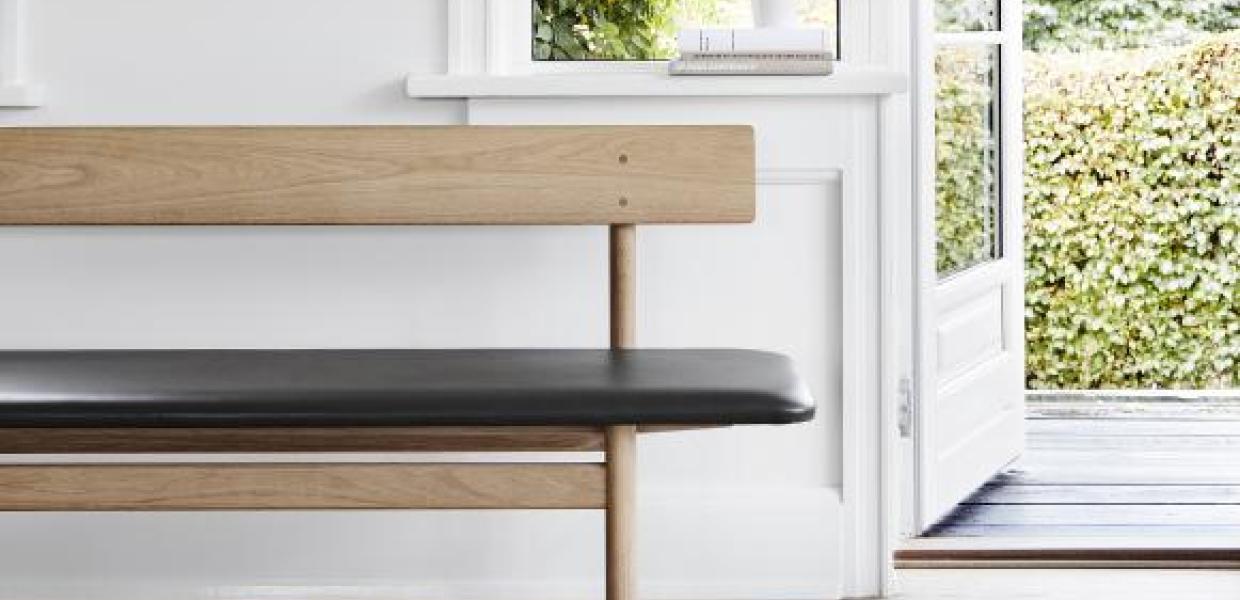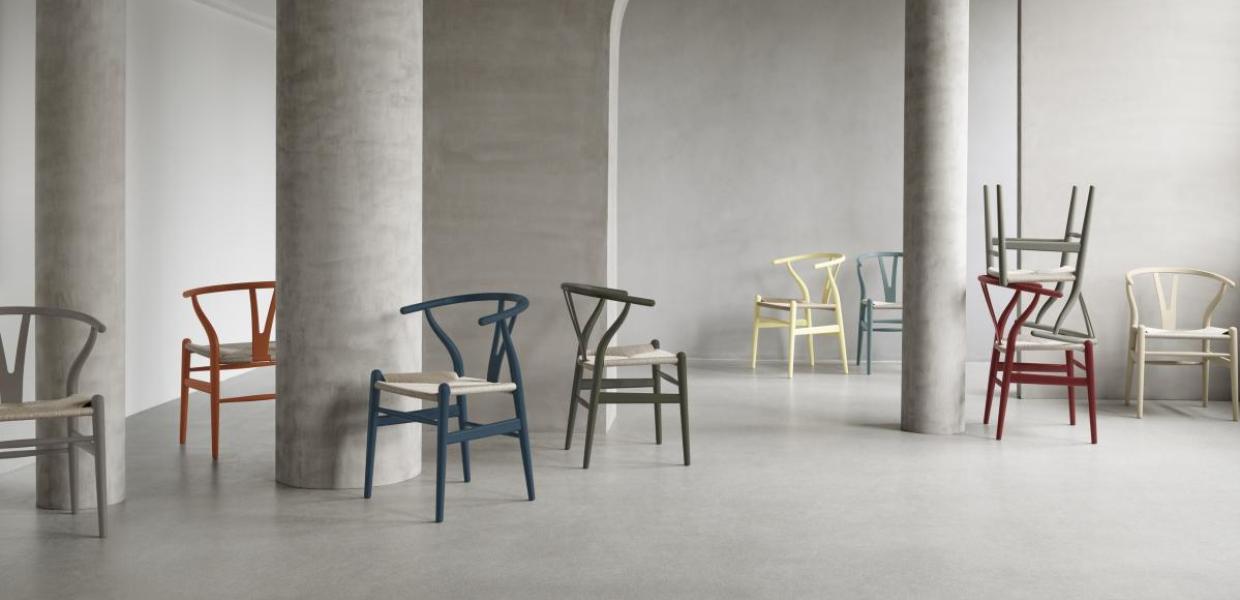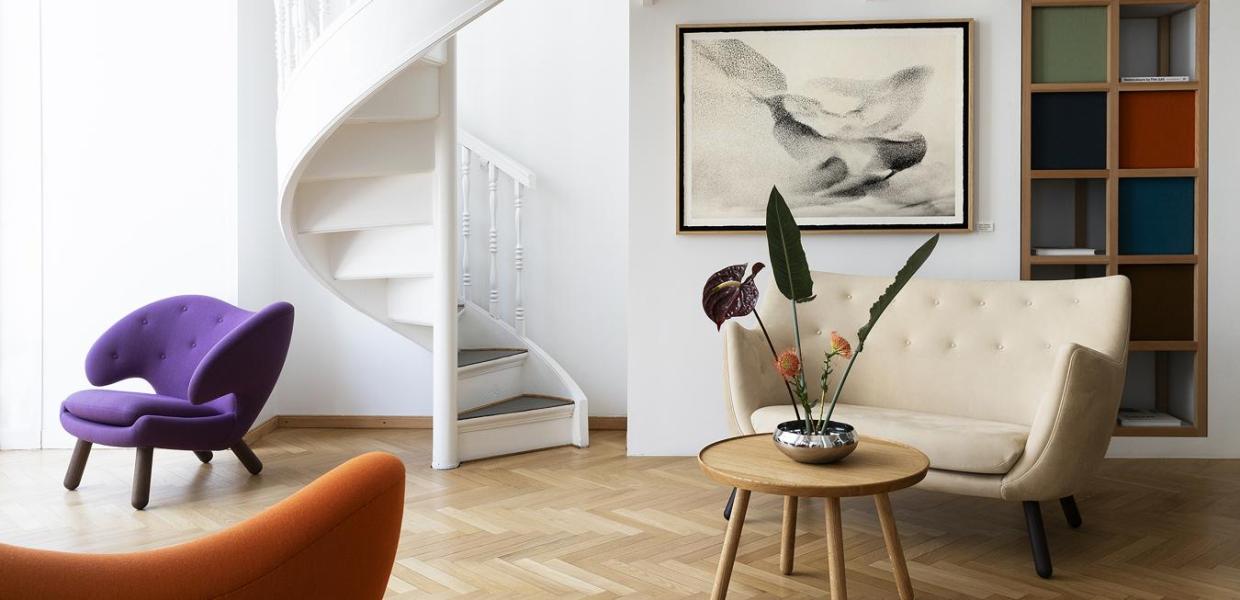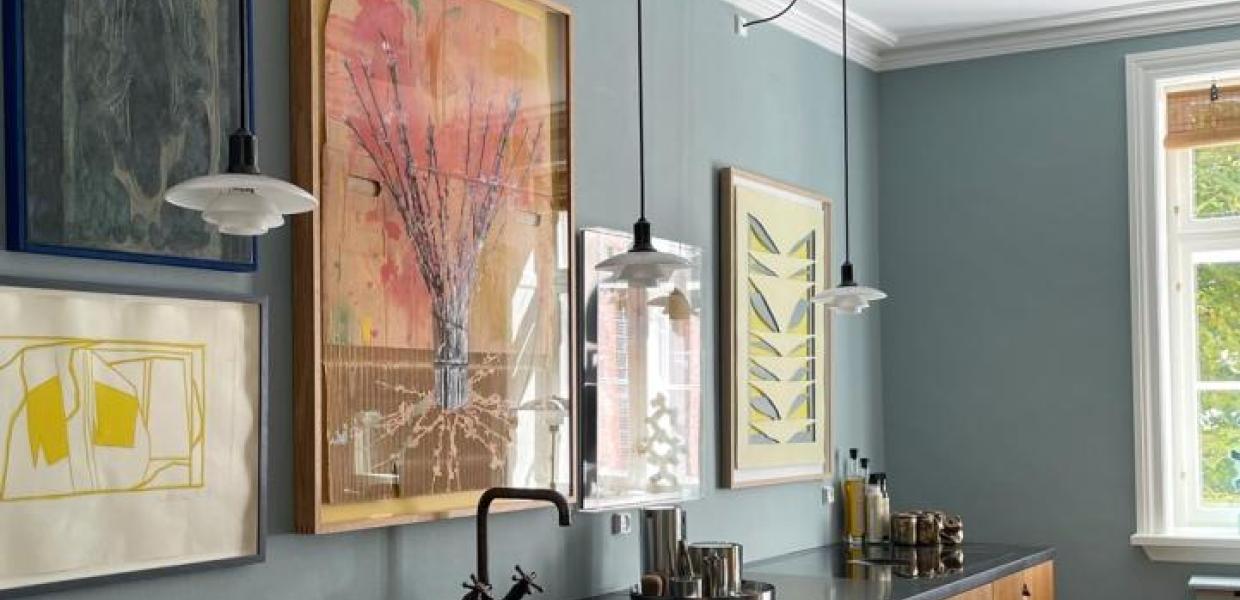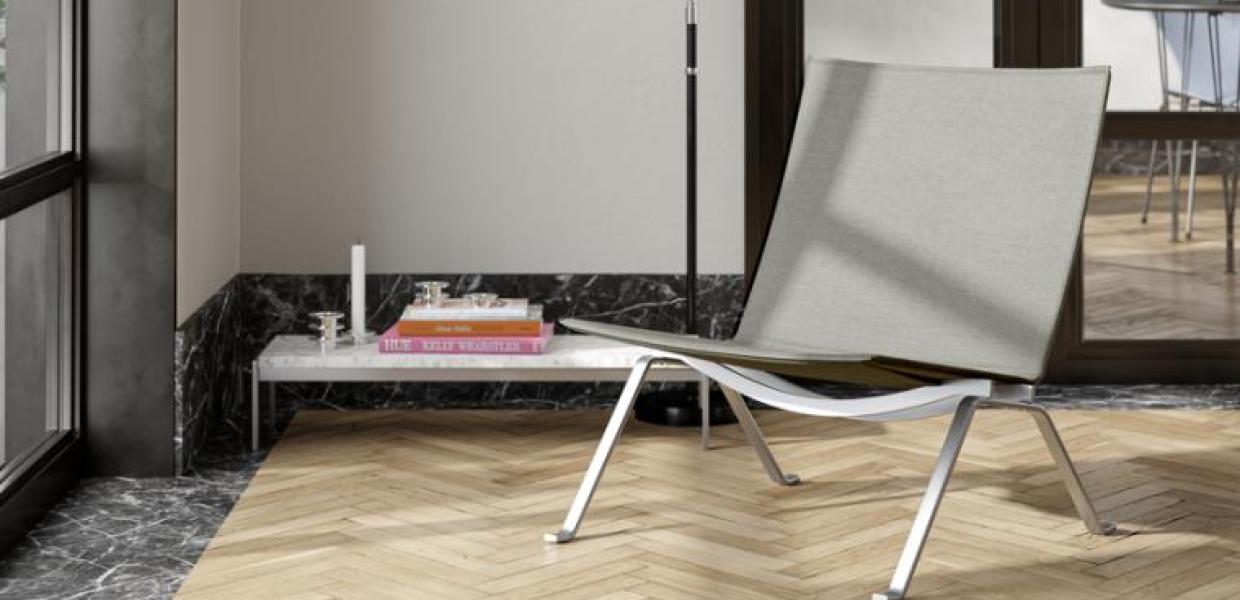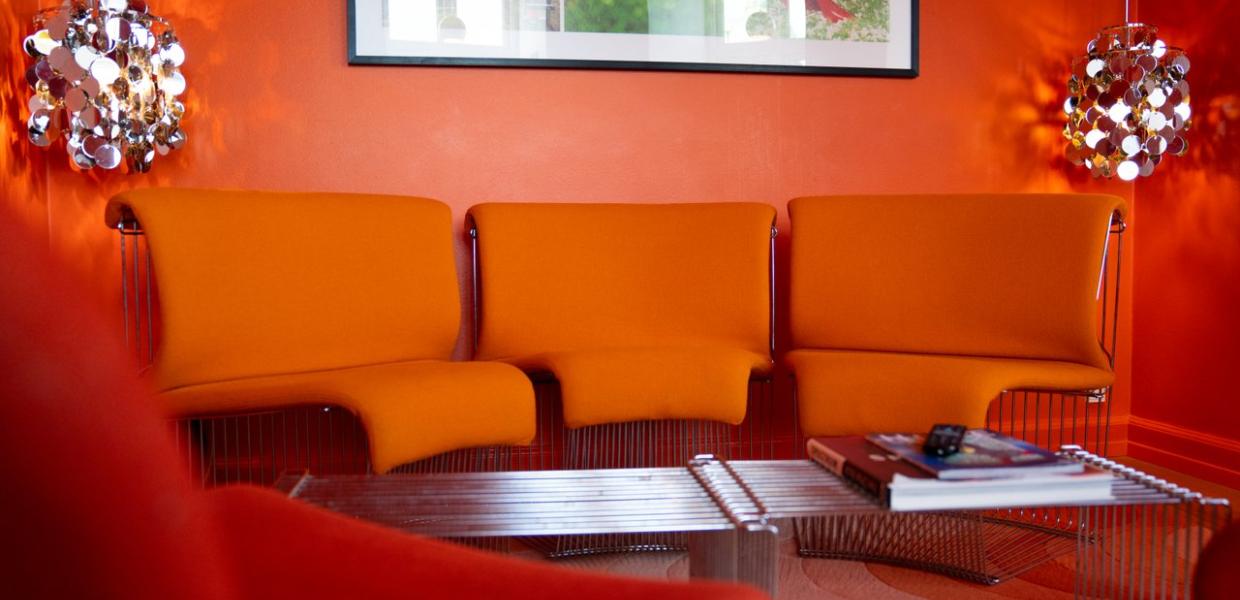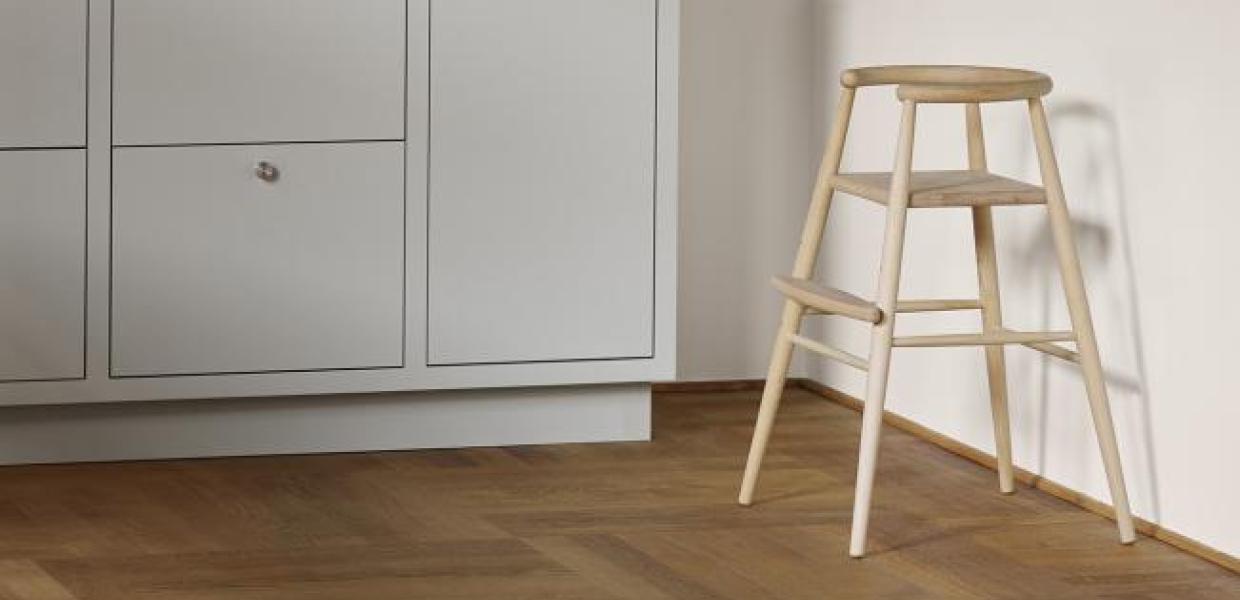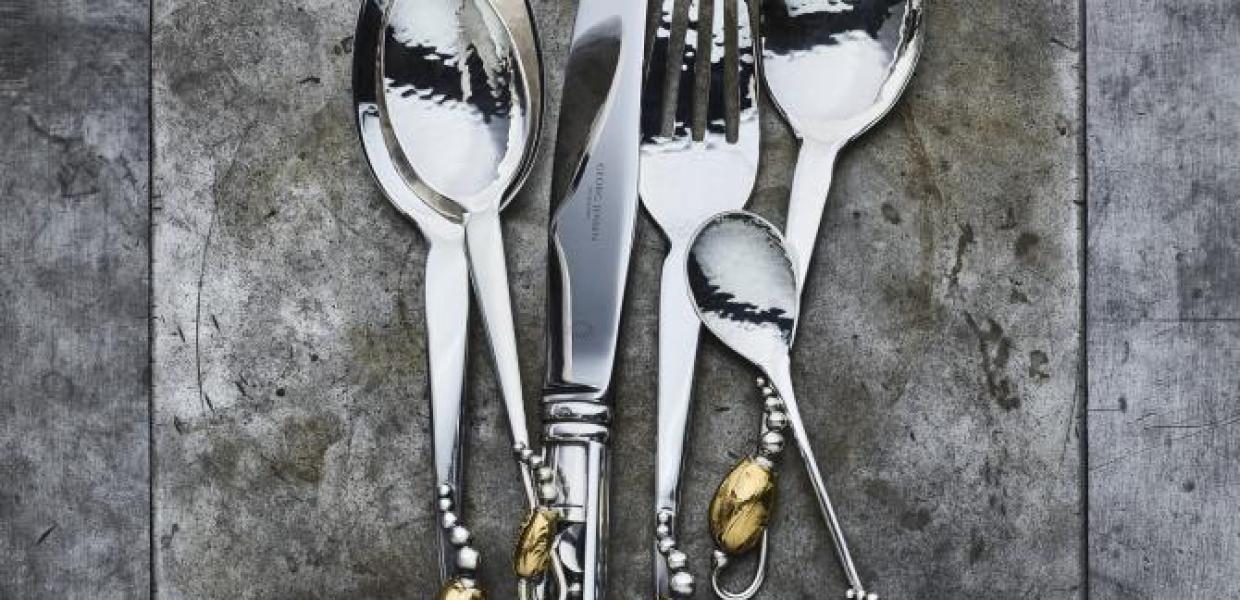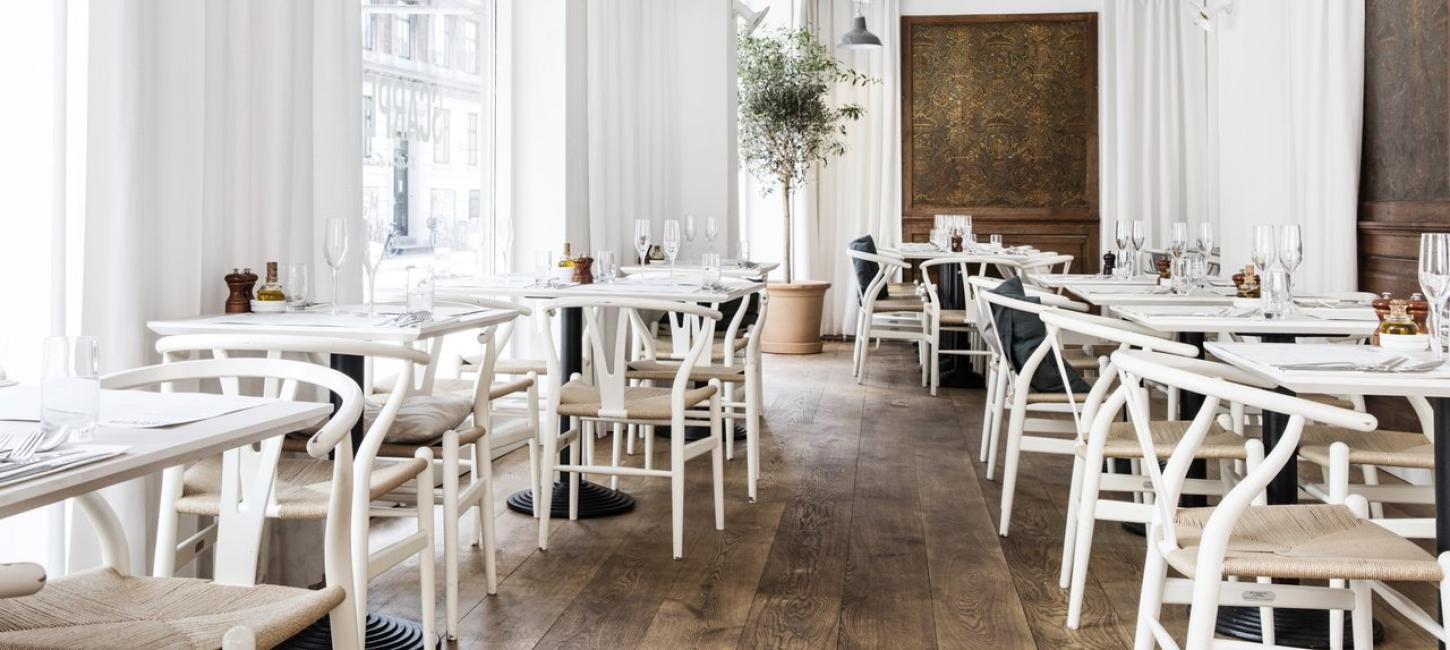
Danish Modern - a design movement
Discover what makes Copenhagen the perfect destination for design enthusiasts and how it turned into one of the world’s most inspiring design hubs. Meet the iconic Danish Modern movement and get an outline of how they helped transform Danish - and international - design traditions forever.
During the post-war period, the Danish welfare state developed focusing on social justice, democracy, and progressive optimism for a better world. Everything had to be functional and long-lasting as well as democratic and thus affordable. This was also reflected in the mentality and work of local designers and furniture architects and is when the Danish Modern movement began to take on the international design scene as well as with iconic design furniture such as The Egg, The Chair, Swan, and The Flowerpot.
However, the transformation and development of iconic Danish design with lasting international impact began earlier in the 20th century and originated with a string of hugely passionate and pioneering creators, 10 of whom took Danish design to a whole new level.
The Danish Modern movement: 10 iconic designers
1. Kaare Klint
Kaare Klint (1888-1954) is a Danish furniture designer, architect, and artist, who in 1923 helped found the Royal Danish Academy of Fine Arts’ furniture school in Copenhagen, and who laid the seeds for the Danish Modern movement soon to follow. As a professor at the Academy, and through his own design and teaching, Klint influenced an entire generation of key Danish furniture designers, including Arne Jacobsen, Hans J. Wegner, and Nanna Ditzel, and he is widely considered to be the father of Danish Modern design.
Significantly for Klint, he studied the human body as an inspiration for his furniture, and he shared his knowledge and principles with his students. It was a revolutionary and innovative way of designing furniture that took away focus on aesthetics and instead focused on functionality. It became a style that the world today knows as the aesthetic Danish Modern era. Amongst Klint’s most famous works are the Faaborg Chair, the Church Chair, and the Safari Chair all three of which are still in production today. He also designed the inventory for the Designmuseum Denmark back in 1926, including its unique fruit lamps still in operation today. Lamp designs he did too together with his talented brother Tage Klint for their father at the Le Klint lighting company, also still in operation today.
Photo:VisitCopenhagen
2. Arne Jacobsen
Enter Arne Jacobsen (1902-1971), probably the most internationally recognized Danish designer of them all, and the father of world design icons like The Egg, The Swan, The Spanish Chair, The 7 Chair, and many more. Jacobsen is often referred to as the ‘king of functionalism’ and his designs are still in production and in strong demand even today.
Apart from his hugely popular and timeless furniture designs, Jacobsen also created the world’s first design hotel – and Copenhagen downtown’s first skyscraper - then named the SAS Royal Hotel and built by SAS - Scandinavian Airlines System in 1960. It featured a wealth of Jacobsen’s most famous designs in its restaurant, rooms, bars, and lounge areas all of which were designed by Jacobsen; from the main structure to the lamps, the window frames, and the door handles, to world-famous chairs like The Egg, The Swan, and The Drop. The hugely popular 5-star hotel is still in operation today and its original room no. 606 available for viewings on request.
Jacobsen contributions to the functionalist movement were vital, and amongst his most noted architectural works are the Bellavista Housing Estate, the Bellevue Theatre, and the Bellevue Lido (1936-37) in Klampenborg and the nearby petrol station in Skovshoved. Abroad Jacobsen is known for e.g., creating St. Catherine’s College at Oxford University (UK), where he too chose to design all furnishings, lamps, China, door handles, and more.
Photo:Mellanie Gandø
3. Børge Mogensen
Børge Mogensen (1914-1972) was an extremely productive Danish cabinetmaker and the one to bring the vision of an industrial production of furniture to life when masterminding the FDB Møbler in 1942. His most famous piece is probably his multi-purpose Spoke-Back Sofa which, when presented in 1945, was praised for its innovative approach, but considered way too sophisticated for post-war tastes. It wasn’t until 1963 that the item was put into industrial production and today, the same sofa is produced by Fredericia Furniture and can be seen at their showroom in the city centre. Other items include the J52G rocking chair and the J27 stool still sold today by FDB.
Photo:Fredericia Møbler
4. Hans Wegner
Hans J. Wegner‘s (1914–2007) extraordinary chair designs also contributed to making mid-century Danish design popular on a truly international scale. Wegner had a long and productive career and designed some 500 chairs, many of which have become popular classics still in production today. He had a special love to wood and a particular talent for utilising the wood grain to create surprising sculptural lines. Among those was The Round Chair designed in 1949, which became instantly famous in 1960 when presidential nominees John F. Kennedy and Richard Nixon sat in the chair in the US’ first-ever televised presidential debate. Since then, the chair was simply named ‘The Chair’ (PP503).
Also, hugely popular, and still in strong demand globally due to their timeless designs are, for example, the brilliant Y chair (CH24), the Teddy chair (/PP19), and the Ox-chair.
Photo:Carl Hansen & Søn
5. Finn Juhl
Finn Juhl (1912-1989) is another influential Modernist and design pioneer out of Denmark – and not just any. Juhl softened up the Danish modernist style with a more poetic design language and spent a lot of his time in the US, where at the age of only 38, he was asked to design the interior for the Trusteeship Council Chamber at the United Nations Headquarters in New York (inaugurated in 1952 and still in operation today).
Amongst more than 40 classic masterpieces are the Poet Couch, Pelican Chair, and Chiftan Chair. To venture into Juhl’s design universe and get an overview of his many designs, consider a trip just north of Copenhagen to Finn Juhl’s House, now part of the Ordrupgaard Art Museum. The house is a great testament to the enduring appeal of Danish Modern design and his own contribution to it. Fully restored and open to the public since 2008, the 1940s perfectly preserved open-plan home features furniture designed by Juhl himself as well as his personal collection of arts and crafts by the likes of Danish painters Vilhelm Lundstrøm, Egill Jacobsen and Richard Mortensen.
Photo:House of Finn Juhl
6. Poul Henningsen
Poul Henningsen (1894-1967) is yet another of Denmark’s hugely influential architects and designers and often simply referred to as PH. PH is often referred to as Denmark's first expert in lighting theory. His world-famous lamp designs were created in close collaboration with Danish lighting manufacturer Louis Poulsen, but his talent was much more diversified. Trained at the Technical School and the Danish College of Technology in Copenhagen, PH worked as an independent architect and designed houses, a factory, a part of Tivoli, and the interiors of two theatres in the city too.
Between his most notable works and designer collectibles are the PH Cone lamps - originally designed for the Langelinie Pavilionen on the city’s scenic waterfront and is still part of the venues’ cool interior - and the PH5 Pendant. Also notable is PH’s distinctive mark at one of the city’s most famous attractions and gardens, namely Tivoli, where PH was Head Architect in the 1940s and created unique signature lightning solutions, that are still in use and admired by locals and visitors alike in the present day.
Photo:The Darling
Design stars working in other materials
Two Danish designers who stood out from their fellow mid-century designers, both in terms of design language and choice of materials, but also helped ignite Danish design’s way to fame worldwide are Poul Kjærholm and Verner Panton. While wood was the all-time favourite used material amongst most Danish designers, Kjærholm and Panton preferred working in steel and plastic respectively and became equally important to the Danish Modern legacy:
7. Poul Kjærholm
Although Poul Kjærholm (1929-1980) was trained as a cabinetmaker, he soon began exploring materials beyond wood at The School of Arts and Crafts in Copenhagen (Today the Royal Danish Academy - Architecture, Design, Conservation). Kjærholm preferred steel and combined it with materials such as leather, wicker, marble, and wood, and his attention to detail meant that some years he would only design a single piece of furniture. However, in the 1950’s Kjærholm designed a whole range of furniture for his private villa situated in Rungsted, north of Copenhagen, and today his furniture, including e.g., The PK9, PK 22, and PK25 chairs, are considered exclusive designer items with prices sometimes higher for used rather than new items. As with other Danish modernists, Kjærholm's furniture is represented at art and design museums worldwide including, of course, at the Designmuseum Denmark, but also at e.g., Museum of Modern Art in New York.
Photo:Fritz Hansen
8. Verner Panton
Danish architect and designer Verner Panton (1916-1998) also ranks among the most innovative designers during the second half of the 20th century. In 1960, Panton designed his Panton Chair, the first chair to be made completely out of plastic in a single piece. But Panton’s wildly shaped furniture, bold use of colours and tacky plastic was not popular at first. Plastic was a low-status material and not something that Danes wanted in their living rooms.
Popular Danish taste did not quite know what to make of him, and as a result the Danish “enfant terrible” moved to Switzerland where his potential was greatly appreciated. Iconic furniture, like the Living Tower Room Divider, the Heart Cone Chair, and the Panton Chairs, was at the heart of Panton’s creative output, but he also designed numerous lamps, including the Flowerpot and Panthella series, many of which are still in production. It was not until after Panton passed away in 1998 that he finally received recognition in Denmark.
Photo:Mellanie Gandø
The female touch
Mid-century Danish design was almost only created by men, but especially one woman belongs to the prestigious club of architects behind:
9. Nanna Ditzel
Nanna Ditzel (1923-2005) initially trained as a cabinetmaker at the Royal Academy, and many of her furniture designs too were influenced by the father of Danish Modern, Kaare Klint. Ditzel, however, also designed silver jewellery for the Danish jeweller and design brand Georg Jensen, as well as a vast collection of textiles for Danish textile manufacturer Kvadrat and many of which are still in production. Later in life, she became more experimental and was greatly inspired by new trends and materials, and she never stopped renewing her design. Along with PH and Verner Panton, Ditzel is represented in the Danish Culture Canon with her children’s High Seat Chair design from 1955 which was nothing short of a revolution at the time, whereas another Ditzel classic is the Trinidad Chair Collection
Photo:Carl Hansen & Søn
And the predecessor…
10. Georg Jensen
Although belonging slightly to the generation before the above, Danish silversmith Georg Jensen (1866-1925) also deserves mentioning. Jensen trained as a sculptor but turned to metalworking to support his young family. He combined the two disciplines to create simple pieces with smooth, organic lines. Today, Georg Jensen bowls, candlesticks, cutlery, and jewellery are sold worldwide, including at the company’s impressive flagship store at Amagertorv in Copenhagen.
Photo:Georg Jensen

Senior Manager – Press & PR
